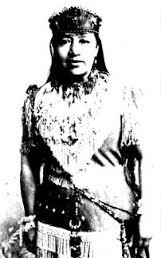Enter to win a copy of the new book
Soldier, Sister, Scout, Spy:
Women Soldiers and Patriots of the Western Frontier.

Sarah Winnemucca brooded over the abandoned houses along the dusty track. She and her small party had departed the John Day Valley in the eastern Oregon Territory three days before. They were on the way to Silver City, Idaho, where Sarah would drop off her passengers before heading for Elko, Nevada. There she intended to take a train to Washington, DC, and attempt to tell President Rutherford B. Hayes that her people were starving, the Indian agents were crooked, and none of the promises to the Paiute had been kept. On June 8, three days after the war was reported in the Enterprise, Sarah was unknowingly headed straight for the heart of the battle. “We saw houses standing all along the road without anybody living in them,” Sarah later wrote in her book Life Among the Piutes [sic].
On June 12, they met Paiute Joe on the road and learned the dreadful news. “He said the Bannock Indians were just killing everything that came in their way, and he told us to get to a place called Stone House. That was the first I heard that the Bannocks were on the warpath.” She also learned that there was no one the Bannocks would love to kill more than Chief Winnemucca’s daughter.
When the Bannock War broke out, Sarah was thirty-four years old, daughter of the highly respected Paiute chief Winnemucca and granddaughter of old Chief Truckee, who first met Captain John Fremont and his explorers and guided them over the Sierra Mountains. Truckee had for years considered white people the long-lost brothers of Indians and always counseled peace despite increasing violence by whites against his people and the outright theft of Paiute lands in the Nevada Territory.
Now it appeared the Paiutes were caught in a vise between their northern neighbors in Idaho and Oregon, the Bannock Indians, and the increasing number of settlers pushing them out of their tribal lands in Nevada. Also known as the Snake Indians, the Bannocks were superb horsemen, tall and lean. They dressed in fringed buckskin decorated with quills, scalps, and red, yellow, and black paint and wore a single eagle feather or a headdress made of trimmed horse tail or porcupine skin. Their enemies considered them the most savage and bloodthirsty of all the Indians west of the Mississippi, but they had been relatively peaceful until driven to rebellion.
To learn more about Sarah Winnemucca and other such patriots read
Soldier, Sister, Scout, Spy:
Women Patriots and Soldiers on the Western Frontier.

